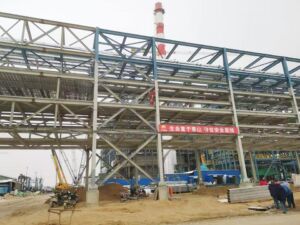When choosing the right steel grating for your project, it’s important to consider the specific requirements of the application. Whether it’s for industrial flooring, catwalks, or any other structural application, the type of steel grating you choose can have a significant impact on the overall performance and longevity of the project.
One of the first things to consider is the type of load the steel grating will need to support. Different types of steel grating are designed to handle different load capacities, so it’s important to select the appropriate load class for your specific project. This will ensure that the steel grating can effectively support the intended load without compromising safety or structural integrity.
In addition to load requirements, the environment in which the steel grating will be installed is another crucial factor to consider. For outdoor applications, exposure to elements such as moisture, chemicals, and extreme temperatures can impact the durability and corrosion resistance of the steel grating. In such cases, it’s important to choose a material and surface treatment that can withstand the environmental conditions to ensure long-term performance.

The design and configuration of the steel grating also play a key role in determining its suitability for a project. Different types of steel grating, such as welded, pressure-locked, and riveted, offer unique benefits in terms of strength, open area, and overall design flexibility. By understanding the specific requirements of your project, you can select the most appropriate design and configuration to optimize performance and functionality.
When evaluating different steel grating products, it’s essential to consider the overall quality and compliance with industry standards. Look for reputable manufacturers that adhere to recognized quality standards and certifications, as this can provide assurance of the product’s performance and reliability. Additionally, consider factors such as material traceability, product testing, and warranty to ensure that the steel grating meets the necessary quality criteria for your project.
Another important consideration when choosing steel grating is the installation method and requirements. Depending on the project specifications, factors such as support structure, anchoring, and fastening methods will influence the selection of the most suitable steel grating product. It’s important to consult with experienced professionals to ensure proper installation and adherence to safety guidelines for the specific application.
In some cases, customization may be necessary to meet the unique requirements of a project. Custom steel grating solutions can be tailored to specific dimensions, load capacities, surface treatments, and other critical parameters to ensure optimal performance and fit for the intended application. Working with a manufacturer that offers customization capabilities can provide a tailored solution that meets the exact needs of the project.

Cost considerations are also a significant factor in the decision-making process when choosing steel grating for a project. While it’s important to stay within budget constraints, it’s equally important to prioritize quality, performance, and long-term value. By evaluating the total cost of ownership, including maintenance, durability, and lifecycle expectancy, you can make an informed decision that balances initial investment with long-term benefits.
In conclusion, choosing the right steel grating for your project involves a comprehensive assessment of load requirements, environmental conditions, design considerations, quality standards, installation needs, customization options, and cost factors. By carefully evaluating these key aspects and working with trusted suppliers, you can select a steel grating solution that delivers optimal performance, durability, and safety for your specific application.

